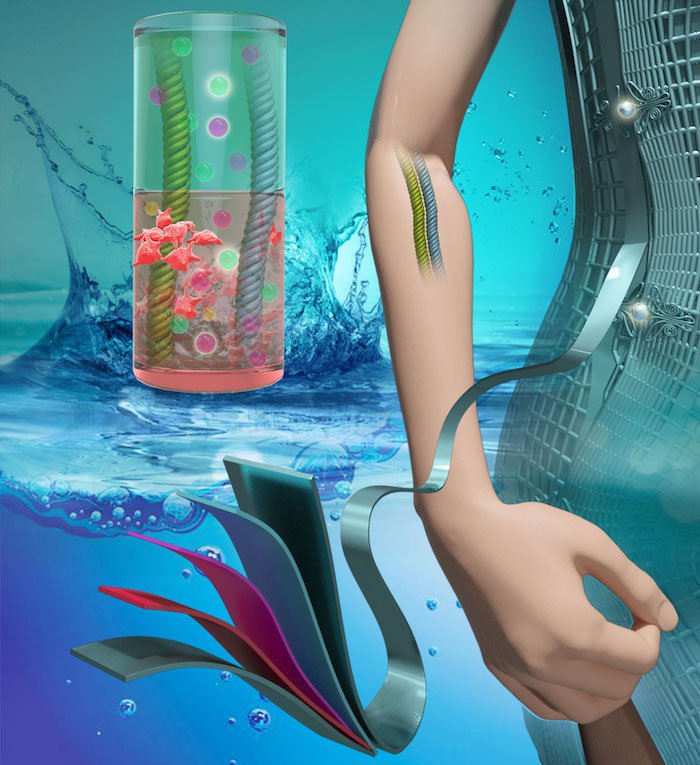Bendy batteries that run on salt water could power your next wearable
While spit could power your next phone

A revolution in battery technology is brewing and it could make non-toxic, recyclable batteries the norm.
Scientists in China have developed a thin, flexible battery powered by body-friendly fluids – namely, saline (or intravenous) solution and cell-culture medium – that could be perfect for wearables and implantable medical devices.
"Current batteries like the lithium-ion ones used in medical implants generally come in rigid shapes," said team lead Yonggang Wang of Fudan University in Shanghai. "Additionally, most of the reported flexible batteries are based on flammable organic or corrosive electrolytes, which suffer from safety hazards and poor biocompatibility for wearable devices, let alone implantable ones."
The use of sodium-based electrolytes that are neither corrosive nor toxic reduces the dangers associated with leaks when they do occur, while the flexibility could see these new batteries used in far more products than lithium-ion batteries, like smart clothing.
Bending over backwards

Having done away with dangerous electrolytes, the team had the freedom to build batteries that didn’t need to have excessive structural reinforcements, leading to the creation of two flexible designs – a belt-like shape, made of thin films of electrode material stuck on a steel mesh, and a woven carbon nanotube fiber backbone embedded with nanoparticle electrode materials.
During testing, both batteries came out with flying colours, outperforming most lithium-ion batteries currently used in wearables in terms of power output and amount of charge they can hold.
The accidental cancer treatment
Not only did the concept batteries outperform traditional batteries, the nanotube fiber version accelerated the conversion of dissolved oxygen into hydroxide ions. In simple words, starved the electrolyte of oxygen.
Get daily insight, inspiration and deals in your inbox
Sign up for breaking news, reviews, opinion, top tech deals, and more.
Even though this reduces the battery’s effectiveness, deoxygenation is perfect for cancer starvation therapy.
"We can implant these fiber-shaped electrodes into the human body to consume essential oxygen, especially for areas that are difficult for injectable drugs to reach," explained Wang. "Deoxygenation might even wipe out cancerous cells or pathogenic bacteria since they are very sensitive to changes in living environment pH. Of course, this is hypothetical right now, but we hope to investigate further with biologists and medical scientists."
Just spit on it
Meanwhile, researchers at Binghamton University in New York have created a paper-based battery that is powered by bacteria in saliva.
This new innovation, which could be pretty cheap to run, can power a single LED light for about 20 minutes with just one drop of spit.
According to Professor Seokheun Choi, co-author of the paper published on this new bio-battery, “This is all about a disposable, easy-to-use, and portable bio-battery that can generate power from bacterial metabolism. This battery is ready to operate with human body fluids like saliva for on-demand power generation for other disposable low-power applications such as biosensors.”
So there may come a day when all we’ll need to power up our phones is some simple spit.
Via ScienceAlert and Popular Mechanics

While she's happiest with a camera in her hand, Sharmishta's main priority is being TechRadar's APAC Managing Editor, looking after the day-to-day functioning of the Australian, New Zealand and Singapore editions of the site, steering everything from news and reviews to ecommerce content like deals and coupon codes. While she loves reviewing cameras and lenses when she can, she's also an avid reader and has become quite the expert on ereaders and E Ink writing tablets, having appeared on Singaporean radio to talk about these underrated devices. Other than her duties at TechRadar, she's also the Managing Editor of the Australian edition of Digital Camera World, and writes for Tom's Guide and T3.